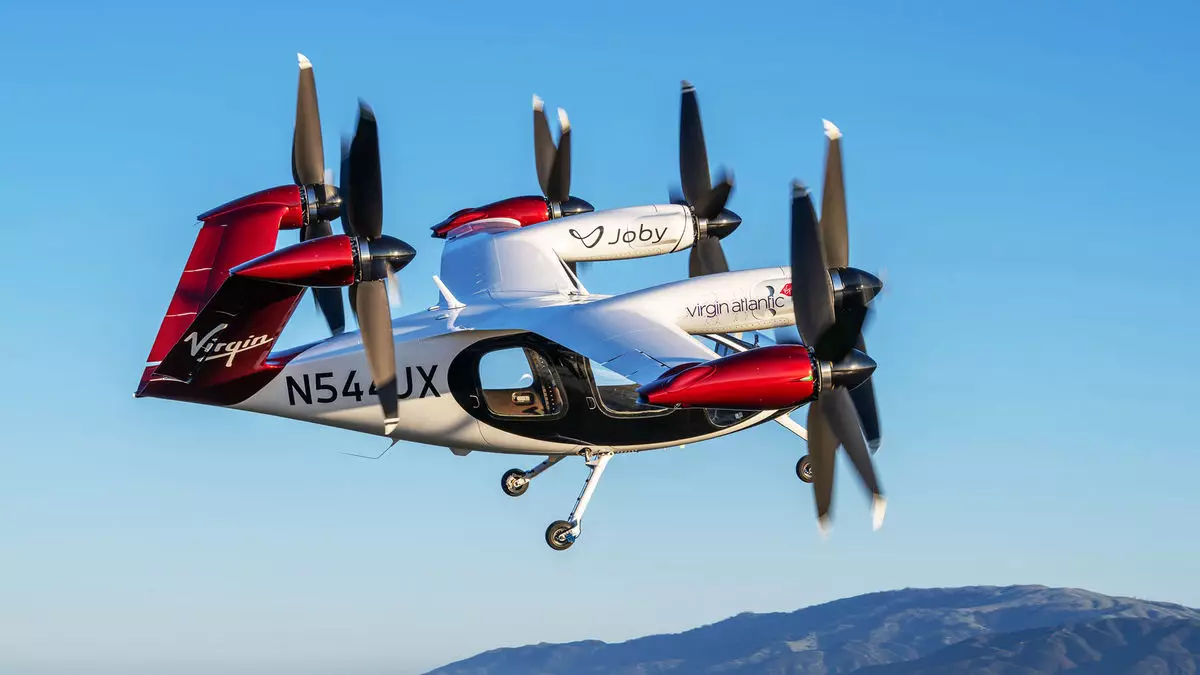Virgin Atlantic is making waves in the aviation industry with its recent announcement to partner with Joby Aviation, a pioneering electric air taxi developer based in California. This collaboration is more than just a business deal; it signifies a transformative shift in how we perceive urban transportation. Imagine commuting through the skies, drastically reducing travel times across bustling cities in the U.K. This ambitious vision aims to revolutionize air travel by introducing a new kind of commuting experience that is both efficient and eco-friendly.
The potential of electric air taxis like Joby Aviation’s four-seat aircraft is astounding, with capabilities to reach speeds of up to 200 mph on routes extending up to 100 miles. The idea of reducing an hour-long car journey to a mere eight minutes is not just enticing; it’s revolutionary. It challenges the traditional norms of urban transport and suggests a future where time is no longer wasted in traffic but embraced in the serene expanse of the skies.
Infrastructure and Accessibility Challenges
However, the venture isn’t without its challenges. For the air taxi service to succeed, it requires significant infrastructure changes, including the development of vertical takeoff and landing (VTOL) areas at airports and strategically located air taxi stations. Virgin Atlantic’s commitment to lobbying for these developments is a proactive step, but it also underscores the reality that building out the necessary infrastructure could be a formidable task.
The landscape of urban planning must adapt to accommodate this new mode of transport, raising questions about zoning laws, safety regulations, and community acceptance. Will urban areas be able to embrace this aerial intrusion? This is a crucial aspect that Virgin Atlantic and Joby must navigate as they strive to integrate air taxis into the urban fabric.
Market Position and Competitive Landscape
From a marketing perspective, Virgin Atlantic is poised to leverage its existing customer base to launch Joby’s air taxi service. This synergy could potentially make air taxis an attractive option for Virgin’s frequent flyers, who are accustomed to premium travel experiences. By promoting these rides through their established booking systems, Virgin can create a seamless travel journey that includes both air and ground options.
Yet, the competitive landscape is evolving rapidly. As other companies also explore electric vertical takeoff technologies, Virgin Atlantic must position itself strategically to maintain its edge. The assurance of air taxi rides being competitively priced with current premium rideshare services is critical to capturing market interest. Customers need to feel they are not only riding a cutting-edge vehicle but also getting value for their money.
The Environmental Impact
An equally significant dimension of this venture is the environmental implications. As the world grapples with the urgent need to address climate change, Joby’s electric aircraft represents a shift toward greener aviation solutions. The partnership with Virgin Atlantic underscores a commitment to sustainability in travel, which may resonate well with environmentally conscious consumers. The concept of enduring less noise pollution and lower carbon emissions from air taxis compared to traditional vehicles offers a refreshing narrative in an industry often associated with environmental challenges.
As the world watches, Virgin Atlantic and Joby Aviation might just be on the brink of redefining not only air travel but also urban mobility. In this exciting juncture, the skies could soon be as crowded as the roads, marking a new dawn for how we navigate our urban landscapes.


Napsat komentář